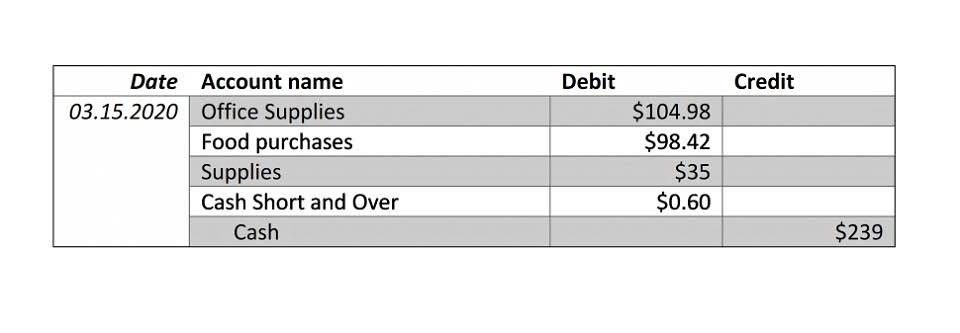
Fixed assets like buildings, vehicles, rental properties, commercial properties, and production equipment all decline over time. Depreciation is an accounting method used to calculate the decrease in value of a fixed asset while it’s used in a company’s revenue-generating operations. Depreciation expense plays a crucial role in accurate financial reporting and informed decision-making for your business. By systematically allocating the cost of assets over their useful lives, depreciation provides a realistic picture of your company’s financial health.
What if the useful life of an asset is short?
To put it simply, accumulated depreciation represents the overall amount of depreciation for a company’s assets, while depreciation expense refers to the amount that has been depreciated in a specific period. Depreciation is an accounting entry that reflects the gradual reduction of an asset’s cost over its useful life. SYD suits businesses that want to recover more value upfront, but with more even distribution than they would otherwise get using the double-declining method. The SYD method’s main advantage is that the accelerated depreciation reduces taxable income and taxes owed during the early years of the asset’s life. The main drawback of SYD is that it is markedly more complex to calculate than the other methods.
Expected Useful Life and Salvage Value

Assets that depreciate faster in the beginning may benefit from the sum-of-the-years’ digits method, similar to the declining balance method. Consider the expected pattern https://www.bookstime.com/ of an asset’s decline in value when selecting a method. The straight-line method is ideal for assets that depreciate steadily over time, such as buildings or furniture.
Inconsistent Application of Depreciation Methods
- Capital expenditure is a fixed asset that is charged off as depreciation over a period of years.
- Consider the practicality of implementing different methods when choosing a depreciation approach.
- Neither of these entries affects the income statement, where revenues and expenses are reported.
- For example, vehicles are assets that depreciate much faster in the first few years; therefore, an accelerated depreciation method is often chosen.
- Cost is defined as all costs that were necessary to get the asset in place and ready for use.
- It doesn’t depreciate an asset quite as quickly as double declining balance depreciation, but it does it quicker than straight-line depreciation.
Finance Strategists has an advertising relationship with some of the companies included on this website. We may earn a commission when you click on a link or make a purchase through the links on our site. All of our content is based on objective analysis, and the opinions are our own. The concept of useful life represents the period beyond depreciation expense meaning which it would not be practical to use an asset anymore. In this example, we can say that the service given by the weighing machine in its first year of life was $200 ($1,000 – $800) to the company. Depreciation is allocated over the useful life of an asset based on the book value of the asset originally entered in the books of accounts.
What is the difference between depreciation and amortization?

Align your depreciation method with your strategic plans for the asset to ensure accurate financial reporting. Accelerated methods like declining balance or sum-of-the-years’ digits can lower reported earnings in early years, which may be preferable for a more conservative financial presentation. Think about how you want your company’s financial performance to be perceived by stakeholders. For assets that lose value quickly in the early years, like computers or vehicles, the declining balance method might be more suitable.

Is depreciation an expense or income?
New assets are typically more valuable than older ones for a number of reasons. Depreciation measures the value an asset loses over time—directly from ongoing use (through wear and tear) and indirectly from the introduction of new product models (plus factors such as inflation). Writing off only a portion of the cost each year, rather than all at once, also allows businesses to report higher net income in the year of purchase than they would otherwise. There are various depreciation methodologies, but the two most common types are straight-line depreciation and accelerated depreciation. In closing, the key takeaway is that depreciation, despite being a non-cash expense, reduces taxable income and has a positive impact on the ending cash balance.
Depreciation expenses, on the other hand, are the allocated portion of the cost of a company’s fixed assets for a certain period. Depreciation expense is recognized on the income statement as a non-cash expense that reduces the company’s net income or profit. For accounting purposes, the depreciation expense is debited, and the accumulated depreciation is credited. On the other hand, depreciation expenses represent the assigned portion of a company’s fixed assets cost for a specific period.
- There are different methods used to calculate depreciation, and the type is generally selected to match the nature of the equipment.
- Remember, tax laws and regulations can change, so it’s essential to stay informed and consult with tax professionals.
- Capital assets such as buildings, machinery, and equipment are useful to a company for a limited number of years.
- The method used by the IRS is called The Modified Accelerated Cost Recovery System (MACRS).
